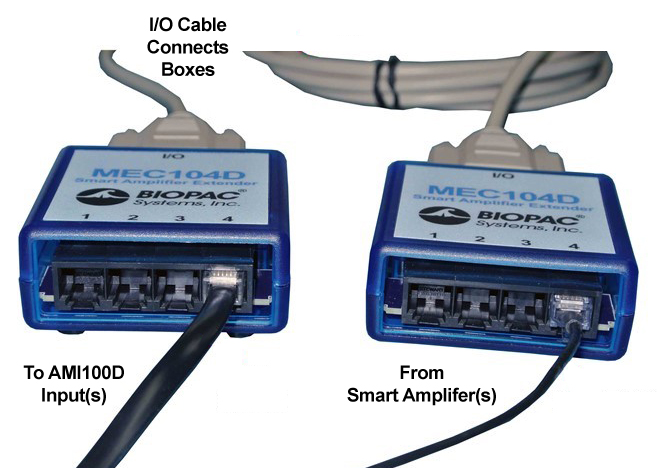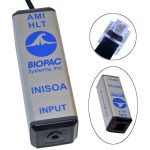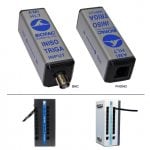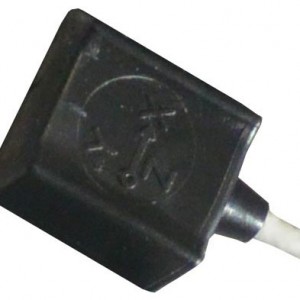Part #: MEC104D
Smart Amp Extender (1 to 4 amps)
Smart Amplifier cables are 3-meters but for protocols that require more length, the MEC104D Smart Amplifier Extender adds 3-meters for up to four Smart Amplifiers. It consists of two extension boxes, one 3-meter I/O cable connecting the two extension boxes, and four RJ12 connection cables. One extension box connects up to four included cables to input channels of the AMI100D; up to four Smart Amplifiers plug into the other extender box. Multiple MEC104D extenders may be used simultaneously with an AMI100D.
While designed specifically for the Smart Amplifiers, the MEC104D may also be used with other high-level transducers, such as accelerometers.
Important! The MEC104D does not include any built-in isolation; if external equipment is connected to the MEC104D, an INISOA should be used for each external connection.
Details
Support
Knowledge Base
- * CLEANING GUIDELINES *
- About License Keys
- AC mode
- AcqKnowledge accuracy
- AcqKnowledge iLok key lost or unavailable
- Amplifier analog output signals
- Amplifier filter settings
- Arbitrary waveform stimulation
- Band-pass and band-stop filters
- BioNomadix Signal Interruption
- Calculating file sizes
- Calibration values
- Checking Finger Cuff Lifetime for NIBP100D/NIBP100D-HD
- Common mistakes/general troubleshooting
- Connecting Calibration Gas Tanks & Mixing Chambers
- Editing noisy data
- Electrodermal activity measurements
- Event Markers | Correcting Automated Placement
- Excel files exported from BIOPAC software open in Excel 'Protected View'
- Glossary of specification terminology
- Grounding guidelines
- High pass filters
- How can I move QRS peak event marks from the bottom of S waves to the top of R waves?
- Installation CD/DVD lost or damaged...how can I re-install software?
- Interfacing third-party transducers
- Low pass filters
- Notch filter
- Railing signal (flatline)
- Recording good data
- Troubleshooting MP160 Ethernet Communication
- Using other software with BIOPAC hardware
- VREF, reference excitation voltage




Stay Connected